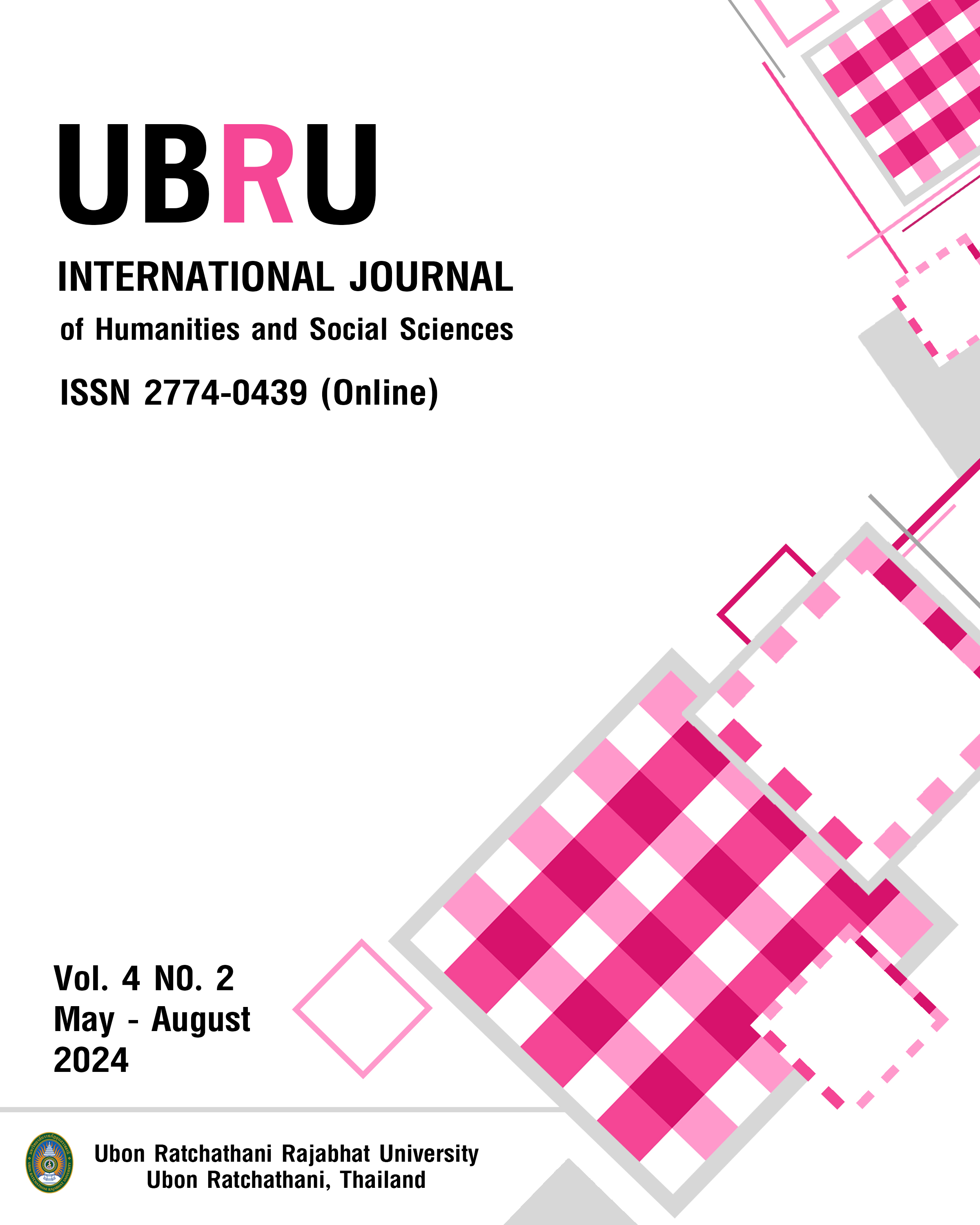Evaluating the Efficacy of Augmented Reality Technology for COVID-19 Education and Knowledge Enhancement
Main Article Content
Abstract
The global COVID-19 pandemic has precipitated an unprecedented crisis, necessitating widespread travel restrictions and stringent social distancing measures. This health emergency has presented multifaceted challenges to contemporary society, highlighting the imperative for innovative educational solutions to disseminate crucial information about the virus and its ramifications. Augmented Reality (AR) technology emerges as a promising digital tool uniquely positioned to address these challenges, offering immersive and interactive learning experiences. In a recent study evaluating the efficacy of AR technology in COVID-19 education, researchers developed a bespoke augmented reality mobile application designed to impart knowledge about the virus. The study's primary objective was to gauge the impact of this educational tool on participants' learning outcomes through pre-and post-tests. Thirty participants were enlisted to interact with the AR application, yielding findings that demonstrated a significant enhancement in knowledge and comprehension of COVID-19 after its utilization. These results underscore the potential of AR technology as a potent educational tool in disseminating essential information about COVID-19. The interactive nature of AR facilitates deeper engagement and understanding among learners, offering promising avenues for enhancing public awareness and preparedness in navigating health crises. Further research in this domain is warranted to fully harness the potential of AR technology in addressing global health challenges.
Article Details
References
Alzahrani, N. M. (2020). Augmented reality: A systematic review of its benefits and challenges in e-learning contexts. Applied Sciences, 10(16), 5660.
Anuar, S., Nizar, N., & Ismail, M. A. (2021). The impact of using augmented reality as teaching material on students’ motivation. Asian Journal of Vocational Education And Humanities, 2(1), 1–8.
Arena, F., Collotta, M., Pau, G., & Termine, F. (2022). An overview of augmented reality. Computers, 11(2), 28.
Arici, F., Yilmaz, R. M., & Yilmaz, M. (2021). Affordances of augmented reality technology for science education: Views of secondary school students and science teachers. Human Behavior and Emerging Technologies, 3(5), 1153–1171.
Avila-Garzon, C., Bacca-Acosta, J., Duarte, J., & Betancourt, J. (2021). Augmented Reality in Education: An Overview of Twenty-Five Years of Research. Contemporary Educational Technology, 13(3).
Chen, N., Zhou, M., Dong, X., Qu, J., Gong, F., Han, Y., Qiu, Y., Wang, J., Liu, Y., & Wei, Y. (2020). Epidemiological and clinical characteristics of 99 cases of 2019 novel coronavirus pneumonia in Wuhan, China: a descriptive study. The Lancet, 395(10223), 507–513.
Ciotti, M., Ciccozzi, M., Terrinoni, A., Jiang, W.-C., Wang, C.-B., & Bernardini, S. (2020). The COVID-19 pandemic. Critical Reviews in Clinical Laboratory Sciences, 57(6), 365–388.
Corman, V. M., Muth, D., Niemeyer, D., & Drosten, C. (2018). Hosts and sources of endemic human coronaviruses. Advances in Virus Research, 100, 163–188.
Fan, M., Antle, A. N., & Warren, J. L. (2020). Augmented reality for early language learning: A systematic review of augmented reality application design, instructional strategies, and evaluation outcomes. Journal of Educational Computing Research, 58(6), 1059–1100.
Garzón, J. (2021). An overview of twenty-five years of augmented reality in education. Multimodal Technologies and Interaction, 5(7), 37.
Huang, C., Wang, Y., Li, X., Ren, L., Zhao, J., Hu, Y., Zhang, L., Fan, G., Xu, J., & Gu, X. (2020). Clinical features of patients infected with 2019 novel coronavirus in Wuhan, China. The Lancet, 395(10223), 497–506.
Iatsyshyn, A. V, Kovach, V. O., Romanenko, Y. O., Deinega, I. I., Iatsyshyn, A. V, Popov, O. O., Kutsan, Y. G., Artemchuk, V. O., Burov, O. Y., & Lytvynova, S. H. (2020). Application of augmented reality technologies for preparation of specialists of new technological era.
Jiang, S., Tatar, C., Huang, X., Sung, S. H., & Xie, C. (2022). Augmented reality in science laboratories: Investigating high school students’ navigation patterns and their effects on learning performance. Journal of Educational Computing Research, 60(3), 777–803.
Kanjanawasee, S. (1990). Alternative strategies for policy analysis: An assessment of school effects on students’ cognitive and affective mathematics outcomes in lower secondary schools in Thailand.
Luangrungruang, T., & Kokaew, U. (2022). E-Learning Model to Identify the Learning Styles of Hearing-Impaired Students. In Sustainability (Vol.14,Issue20). https://doi.org/10.3390/su142013280
Martín-Gutiérrez, J., Fabiani, P., Benesova, W., Meneses, M. D., & Mora, C. E. (2015). Augmented reality to promote collaborative and autonomous learning in higher education. Computers in Human Behavior, 51, 752–761.
Maulana, İ. (2020). The Use of Mobile-Based Augmented Reality in Science Learning to Improve Learning Motivation. Journal of Educational Technology and Online Learning, 3(3), 363–371.
Mendoza-Ramírez, C. E., Tudon-Martinez, J. C., Félix-Herrán, L. C., Lozoya-Santos, J. de J., & Vargas-Martínez, A. (2023). Augmented Reality: Survey. In Applied Sciences (Vol. 13, Issue 18). https://doi.org/10.3390/app131810491
Pelet, J.-E. (2017). Mobile Platforms, Design, and Apps for Social Commerce. IGI Global.
Shi, Y., Wang, G., Cai, X., Deng, J., Zheng, L., Zhu, H., Zheng, M., Yang, B., & Chen, Z. (2020). An overview of COVID-19. Journal of Zhejiang University. Science. B, 21(5), 343.
Wang, D., Hu, B., Hu, C., Zhu, F., Liu, X., Zhang, J., Wang, B., Xiang, H., Cheng, Z., & Xiong, Y. (2020). Clinical characteristics of 138 hospitalized patients with 2019 novel coronavirus–infected pneumonia in Wuhan, China. Jama, 323(11), 1061–1069.
Wu, F., Zhao, S., Yu, B., Chen, Y.-M., Wang, W., Song, Z.-G., Hu, Y., Tao, Z.-W., Tian, J.-H., & Pei, Y.-Y. (2020). A new coronavirus associated with human respiratory disease in China. Nature, 579(7798), 265–269.
Yang, L., Liu, S., Liu, J., Zhang, Z., Wan, X., Huang, B., Chen, Y., & Zhang, Y. (2020). COVID-19: immunopathogenesis and Immunotherapeutics. Signal Transduction and Targeted Therapy, 5(1), 128.
Zhou, P., Yang, X.-L., Wang, X.-G., Hu, B., Zhang, L., Zhang, W., Si, H.-R., Zhu, Y., Li, B., & Huang, C.-L. (2020). A pneumonia outbreak associated with a new coronavirus of probable bat origin. Nature, 579(7798), 270–273.
Zhu, N., Zhang, D., Wang, W., Li, X., Yang, B., Song, J., Zhao, X., Huang, B., Shi, W., & Lu, R. (2020). A novel coronavirus from patients with pneumonia in China, 2019. New England Journal of Medicine, 382(8), 727–733.


